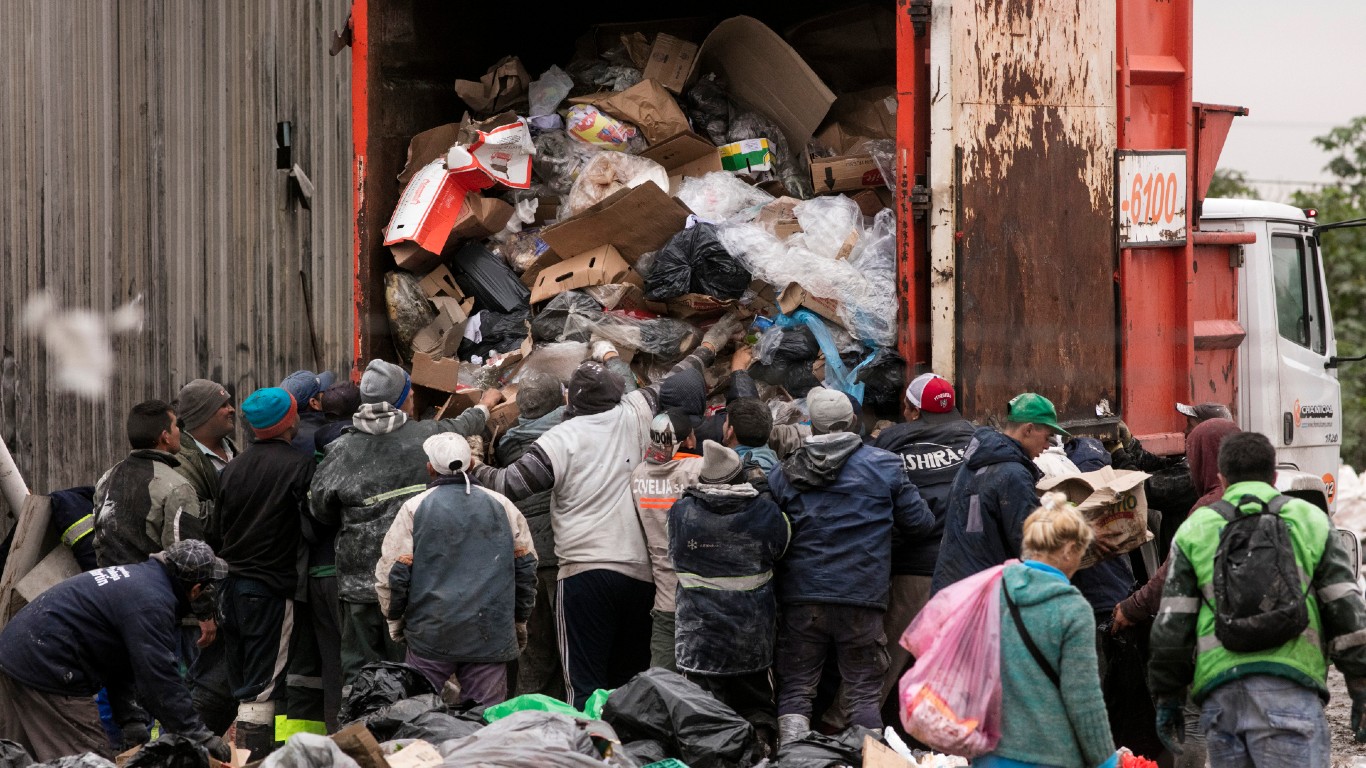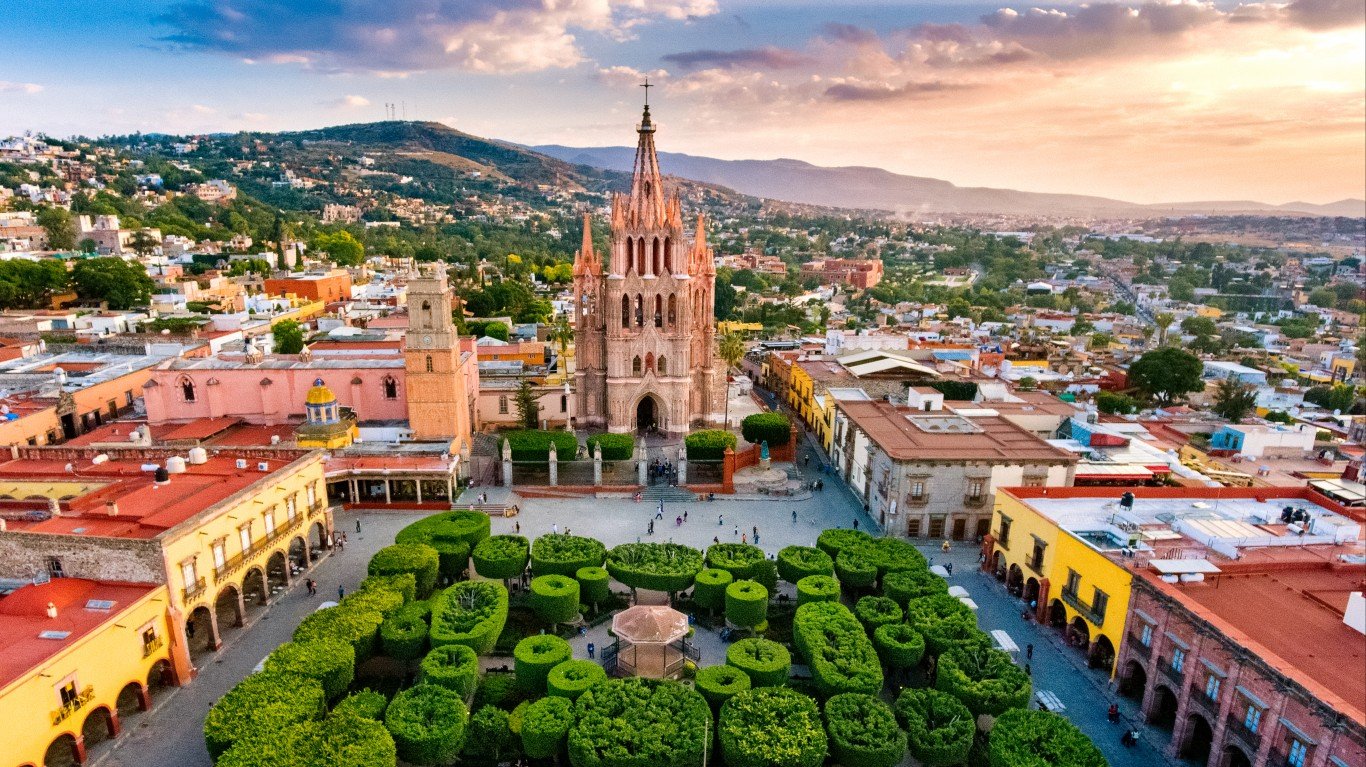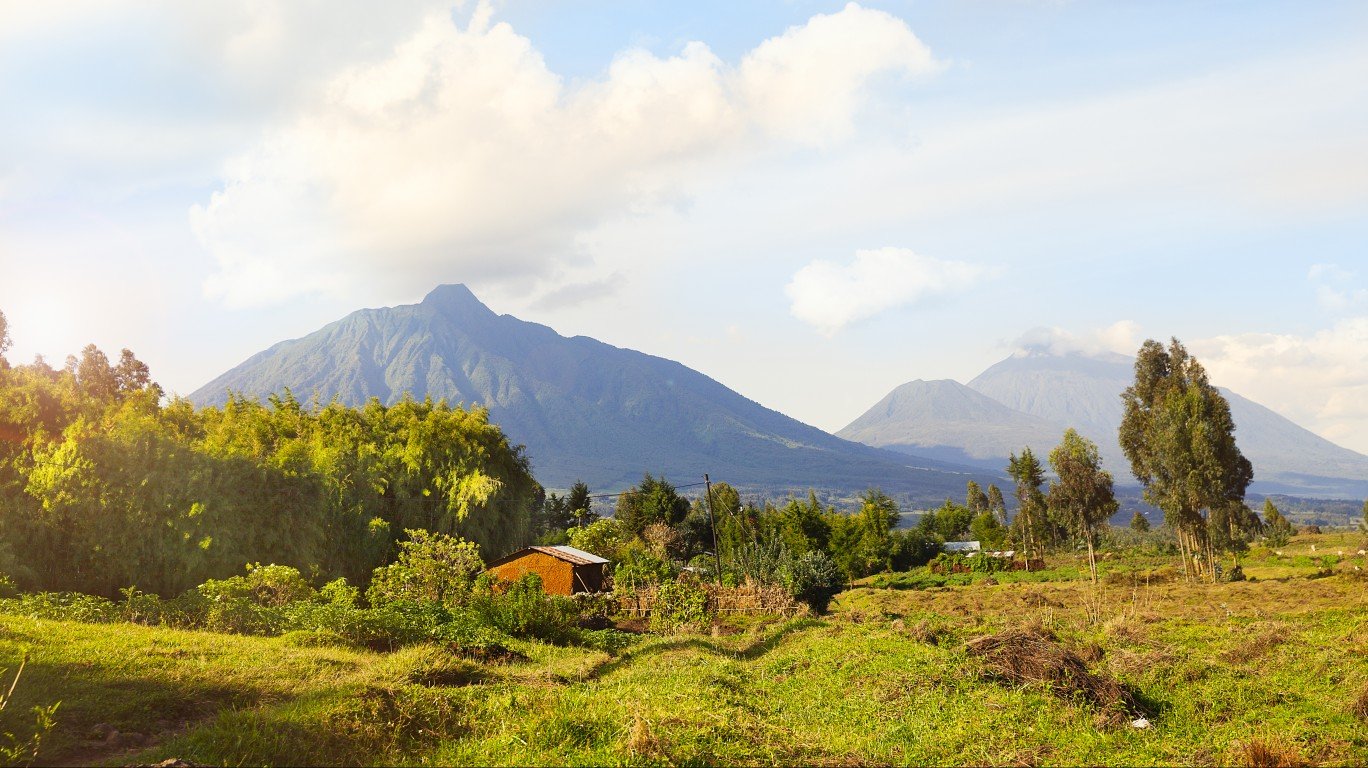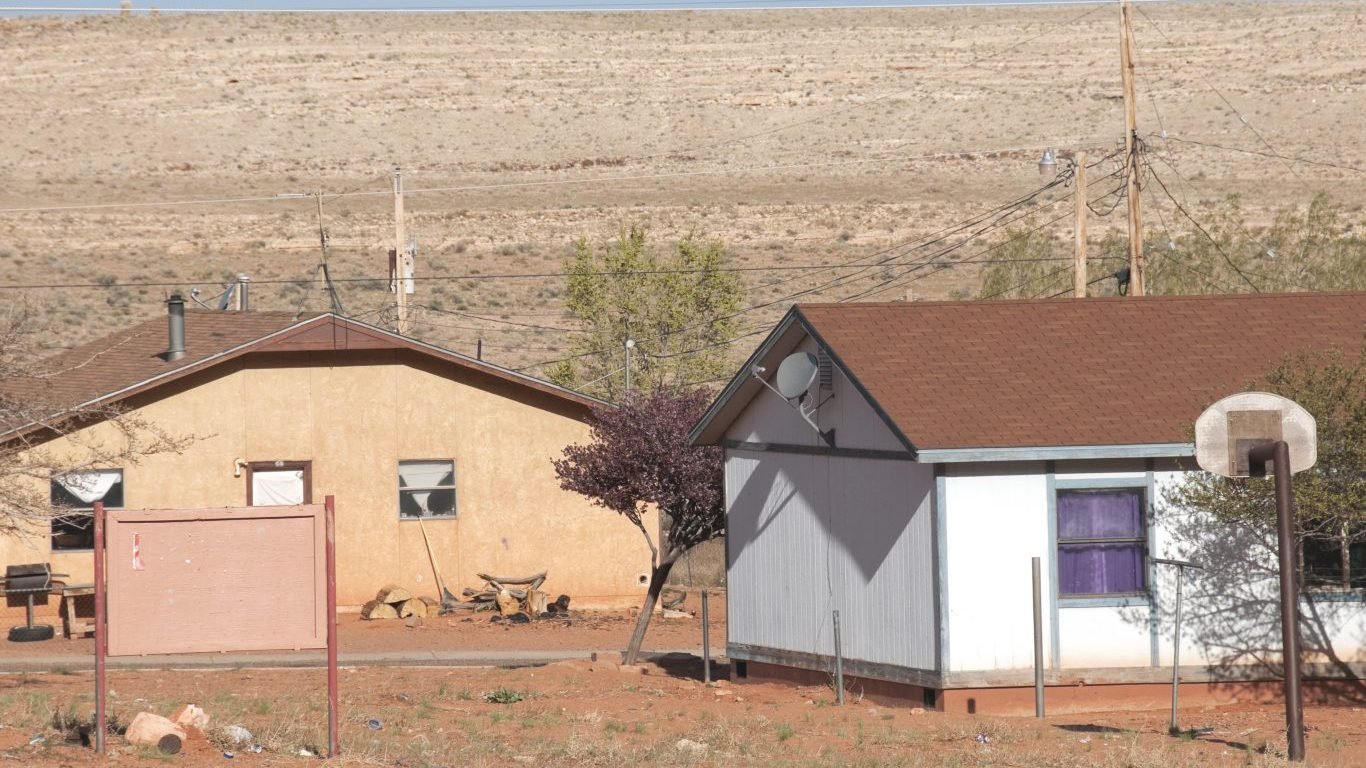

The sheer quantity of edible, nourishing food that gets thrown away every year is stunning. According to the U.N.’s Food and Agriculture Organization (FAO), as much as a third of all the food produced for human consumption — about 1.3 billion metric tons (almost 3 trillion pounds) gets wasted annually. That includes nearly half of all the fruit and vegetables grown.
“If food loss and waste were a country,” writes Inger Andersen, executive director of the United Nations Environment Programme in the U.N.’s Food Waste Index Report 2021, “it would be the third largest source of greenhouse gas emissions.”
Food waste also burdens waste management systems, she points out, and of course contributes to food insecurity. It is thus, she says, “a major contributor to the three planetary crises of climate change, nature and biodiversity loss, and pollution and waste.”
This is particularly tragic when you consider that more than 820 million people around the world — just over 11% of the global population — suffer from hunger, according to FAO. (These 10 nations have the worst hunger problems in the world.)
People waste food differently in different parts of the world. In developing countries, where chronic hunger is often the most severe, inefficient production techniques and lack of proper storage and distribution systems may be the major problems. War and political strife are contributing factors, as well.
In more affluent nations, consumer behavior is often to blame. People simply buy too much food and end up throwing a lot of it away. Europe and North America are the biggest culprits in this regard, wasting far more food than other parts of the world — as much as 95 kilograms (209 pounds) per capita each year or more in some cases. (To avoid contributing to the waste, don’t stock up on these 20 fast-spoiling foods during the pandemic.)
Global food waste data availability is currently low, and measurement approaches have been highly variable. Using the statistics available from the United Nations Environment Programme’s 2021 Food Waste Index Report, 24/7 Tempo has reviewed estimated household waste statistics for 50 countries. Only the waste estimates for these 50 countries are considered compatible with the Food Waste Index. These include 14 countries with “high-confidence” waste estimates in the U.N.’s survey and 36 countries with “medium-confidence” estimates.
Click here to see the size of household waste in 50 countries around the world

1. Australia
> Household food wasted annually: 5.7 billion lbs
> Household food wasted annually per person: 221.6 lbs
> Population as of July, 2020: 25,499,881
[in-text-ad]

2. Austria
> Household food wasted annually: 770.0 million lbs
> Household food wasted annually per person: 85.5 lbs
> Population as of July, 2020: 9,006,400

3. Bahrain
> Household food wasted annually: 476.6 million lbs
> Household food wasted annually per person: 280.1 lbs
> Population as of July, 2020: 1,701,583

4. Bangladesh
> Household food wasted annually: 23.4 billion lbs
> Household food wasted annually per person: 142.1 lbs
> Population as of July, 2020: 164,689,383
[in-text-ad-2]

5. Belgium
> Household food wasted annually: 127.1 million lbs
> Household food wasted annually per person: 11.0 lbs
> Population as of July, 2020: 11,589,616

6. Belize
> Household food wasted annually: 45.3 million lbs
> Household food wasted annually per person: 114.0 lbs
> Population as of July, 2020: 397,621
[in-text-ad]

7. Brazil
> Household food wasted annually: 27.7 billion lbs
> Household food wasted annually per person: 130.5 lbs
> Population as of July, 2020: 212,559,409

8. Canada
> Household food wasted annually: 6.5 billion lbs
> Household food wasted annually per person: 171.6 lbs
> Population as of July, 2020: 37,742,157

9. China
> Household food wasted annually: 202.0 billion lbs
> Household food wasted annually per person: 140.4 lbs
> Population as of July, 2020: 1,439,323,774
[in-text-ad-2]

10. Colombia
> Household food wasted annually: 7.8 billion lbs
> Household food wasted annually per person: 153.6 lbs
> Population as of July, 2020: 50,882,884

11. Denmark
> Household food wasted annually: 1.0 billion lbs
> Household food wasted annually per person: 178.7 lbs
> Population as of July, 2020: 5,792,203
[in-text-ad]

12. Estonia
> Household food wasted annually: 226.5 million lbs
> Household food wasted annually per person: 170.8 lbs
> Population as of July, 2020: 1,326,539

13. Finland
> Household food wasted annually: 797.9 million lbs
> Household food wasted annually per person: 144.0 lbs
> Population as of July, 2020: 5,540,718

14. France
> Household food wasted annually: 12.2 billion lbs
> Household food wasted annually per person: 186.5 lbs
> Population as of July, 2020: 65,273,512
[in-text-ad-2]

15. Georgia
> Household food wasted annually: 889.7 million lbs
> Household food wasted annually per person: 223.0 lbs
> Population as of July, 2020: 3,989,175

16. Germany
> Household food wasted annually: 13.8 billion lbs
> Household food wasted annually per person: 164.8 lbs
> Population as of July, 2020: 83,783,945
[in-text-ad]

17. Ghana
> Household food wasted annually: 5.6 billion lbs
> Household food wasted annually per person: 181.3 lbs
> Population as of July, 2020: 31,072,945

18. Greece
> Household food wasted annually: 3.3 billion lbs
> Household food wasted annually per person: 313.9 lbs
> Population as of July, 2020: 10,423,056

19. Hungary
> Household food wasted annually: 2.0 billion lbs
> Household food wasted annually per person: 207.4 lbs
> Population as of July, 2020: 9,660,350
[in-text-ad-2]

20. India
> Household food wasted annually: 151.6 billion lbs
> Household food wasted annually per person: 109.8 lbs
> Population as of July, 2020: 1,380,004,385

21. Indonesia
> Household food wasted annually: 46.2 billion lbs
> Household food wasted annually per person: 168.8 lbs
> Population as of July, 2020: 273,523,621
[in-text-ad]

22. Iraq
> Household food wasted annually: 10.4 billion lbs
> Household food wasted annually per person: 259.5 lbs
> Population as of July, 2020: 40,222,503

23. Ireland
> Household food wasted annually: 59.0 million lbs
> Household food wasted annually per person: 12.0 lbs
> Population as of July, 2020: 4,937,796

24. Israel
> Household food wasted annually: 1.9 billion lbs
> Household food wasted annually per person: 216.1 lbs
> Population as of July, 2020: 8,655,541
[in-text-ad-2]

25. Italy
> Household food wasted annually: 1.0 billion lbs
> Household food wasted annually per person: 16.8 lbs
> Population as of July, 2020: 60,461,828

26. Japan
> Household food wasted annually: 18.0 billion lbs
> Household food wasted annually per person: 142.2 lbs
> Population as of July, 2020: 126,476,458
[in-text-ad]

27. Kenya
> Household food wasted annually: 11.5 billion lbs
> Household food wasted annually per person: 213.9 lbs
> Population as of July, 2020: 53,771,300

28. Lebanon
> Household food wasted annually: 1.6 billion lbs
> Household food wasted annually per person: 231.7 lbs
> Population as of July, 2020: 6,825,442

29. Luxembourg
> Household food wasted annually: 121.5 million lbs
> Household food wasted annually per person: 194.1 lbs
> Population as of July, 2020: 625,976
[in-text-ad-2]

30. Malaysia
> Household food wasted annually: 6.4 billion lbs
> Household food wasted annually per person: 199.0 lbs
> Population as of July, 2020: 32,365,998

31. Malta
> Household food wasted annually: 125.2 million lbs
> Household food wasted annually per person: 283.7 lbs
> Population as of July, 2020: 441,539
[in-text-ad]

32. Mexico
> Household food wasted annually: 26.4 billion lbs
> Household food wasted annually per person: 204.8 lbs
> Population as of July, 2020: 128,932,753

33. Netherlands
> Household food wasted annually: 1.9 billion lbs
> Household food wasted annually per person: 110.0 lbs
> Population as of July, 2020: 17,134,873

34. New Zealand
> Household food wasted annually: 643.2 million lbs
> Household food wasted annually per person: 133.4 lbs
> Population as of July, 2020: 4,822,233
[in-text-ad-2]

35. Nigeria
> Household food wasted annually: 83.6 billion lbs
> Household food wasted annually per person: 405.8 lbs
> Population as of July, 2020: 206,139,587

36. Norway
> Household food wasted annually: 934.4 million lbs
> Household food wasted annually per person: 172.4 lbs
> Population as of July, 2020: 5,421,242
[in-text-ad]

37. Pakistan
> Household food wasted annually: 35.2 billion lbs
> Household food wasted annually per person: 159.2 lbs
> Population as of July, 2020: 220,892,331

38. Poland
> Household food wasted annually: 4.7 billion lbs
> Household food wasted annually per person: 123.5 lbs
> Population as of July, 2020: 37,846,605

39. Russian Federation
> Household food wasted annually: 10.7 billion lbs
> Household food wasted annually per person: 73.5 lbs
> Population as of July, 2020: 145,934,460
[in-text-ad-2]

40. Rwanda
> Household food wasted annually: 607.2 million lbs
> Household food wasted annually per person: 46.9 lbs
> Population as of July, 2020: 12,952,209

41. Saudi Arabia
> Household food wasted annually: 792.5 million lbs
> Household food wasted annually per person: 22.8 lbs
> Population as of July, 2020: 34,813,867
[in-text-ad]

42. Slovenia
> Household food wasted annually: 156.8 million lbs
> Household food wasted annually per person: 75.4 lbs
> Population as of July, 2020: 2,078,932

43. South Africa
> Household food wasted annually: 5.1 billion lbs
> Household food wasted annually per person: 86.6 lbs
> Population as of July, 2020: 59,308,690

44. Spain
> Household food wasted annually: 8.0 billion lbs
> Household food wasted annually per person: 170.4 lbs
> Population as of July, 2020: 46,754,783
[in-text-ad-2]

45. SriLanka
> Household food wasted annually: 3.6 billion lbs
> Household food wasted annually per person: 166.6 lbs
> Population as of July, 2020: 21,413,250

46. Sweden
> Household food wasted annually: 1.8 billion lbs
> Household food wasted annually per person: 177.5 lbs
> Population as of July, 2020: 10,099,270
[in-text-ad]

47. United Kingdom
> Household food wasted annually: 11.5 billion lbs
> Household food wasted annually per person: 168.9 lbs
> Population as of July, 2020: 67,886,004
48. United States of America
> Household food wasted annually: 42.7 billion lbs
> Household food wasted annually per person: 128.9 lbs
> Population as of July, 2020: 331,002,647

49. VietNam
> Household food wasted annually: 16.2 billion lbs
> Household food wasted annually per person: 166.4 lbs
> Population as of July, 2020: 97,338,583
[in-text-ad-2]

50. Zambia
> Household food wasted annually: 3.1 billion lbs
> Household food wasted annually per person: 166.9 lbs
> Population as of July, 2020: 18,383,956
Essential Tips for Investing: Sponsored
A financial advisor can help you understand the advantages and disadvantages of investment properties. Finding a qualified financial advisor doesn’t have to be hard. SmartAsset’s free tool matches you with up to three financial advisors who serve your area, and you can interview your advisor matches at no cost to decide which one is right for you. If you’re ready to find an advisor who can help you achieve your financial goals, get started now.
Investing in real estate can diversify your portfolio. But expanding your horizons may add additional costs. If you’re an investor looking to minimize expenses, consider checking out online brokerages. They often offer low investment fees, helping you maximize your profit.
Thank you for reading! Have some feedback for us?
Contact the 24/7 Wall St. editorial team.
 24/7 Wall St.
24/7 Wall St. 24/7 Wall St.
24/7 Wall St. 24/7 Wall St.
24/7 Wall St. 24/7 Wall St.
24/7 Wall St. 24/7 Wall St.
24/7 Wall St.



